| Surface | Average Energy Flux |
|---|---|
| Solar electromagnetic radiation | 241.5 W m-2 |
| Energetic particles (sun and space) | 0.001 W m-2 |
| Geothermal | 0.06 W m-2 |
| Anthropogenic (fossil fuels, nuclear energy) | 0.02 W m-2 |
Radiation Geometry
The position of the Sun in the sky and the path of the solar beam.
Radiation Geometry
Processes of absorption, reflection and scattering of radiation through the atmosphere determine the available short-wave radiation reaching Earth’s surface.

Learning Objectives
- Be able to predict the relative position of the solar disk.
- Use this to calculate the irradiance reaching our planet ‘at the top of the atmosphere’ (in absence of atmospheric effects).

Earth’s Climate System: Energy Inputs
Motivation
- The geographic distribution of radiant energy is not equally distributed on Earth:
- Large scales (Earth’s geometry)
- Small scales (topography)
- Those differences cause many microclimates.


Radiation applications

Radiation Properties and Laws
- Dual properties: wave/particle.
- Frequency ν, wavelength λ and speed of light c.
- The electromagnetic spectrum
- Reading package Lecture 4-5 ‘Radiation Basics’
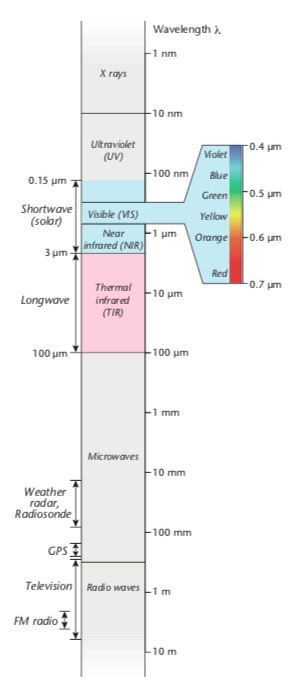
Radiation Properties and Laws
\[ e = hv \qquad(1)\]
\[ E = \frac{2*h*c}{\lambda^{5}}*\frac{1}{e^{\frac{h*c}{\lambda*\sigma_b*T}}-1} \qquad(2)\]
\[ E_b = \sigma_b T^4 \qquad(3)\]
where \(\sigma = 5.67 * 10^-8\)
\[ \lambda_{max} = \frac{b}{T} \qquad(4)\]
\[ \zeta_{\lambda} = \epsilon_{\lambda} \qquad(5)\]
Shortwave vs. Longwave
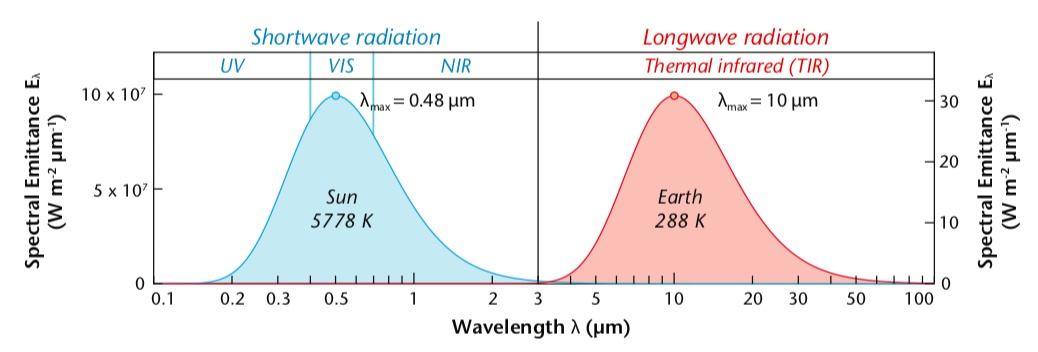
Sun-Earth Geometry
Solar declination (\(\delta\)): Angle between Sun’s rays and equatorial plane.
Latitude (\(\Phi\)): Angle between the equatorial plane and the site of interest (point P in the figure).
Hour angle (h): Angle through which the Earth must turn to bring the meridian of the site P directly under the Sun. It is a function of the time of day.
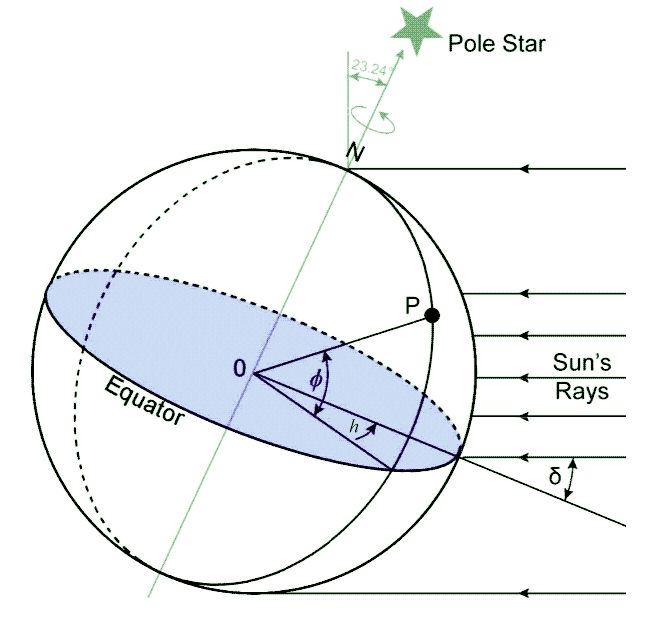
Calculating Solar Declination
\(\delta\) only depends upon day of year, which gives returns \(\delta\) in radians
- The equation is complex due to the non-circular orbit of Earth
\[ \begin{eqnarray} \delta = & 0.006918 - 0.399912 \cos( \gamma)+0.070257 \sin( \gamma) \\ & -0.006758 \cos(2 \gamma) + 0.000907\sin(2\gamma) \nonumber \\ & -0.002697\cos(3\gamma)+0.00148 \sin(3\gamma) \nonumber \end{eqnarray} \qquad(6)\]
where \(\gamma\) is the fractional year and DOY is the day of the year:
\[ \gamma = \frac{2 \pi }{365} (DOY-1) \qquad(7)\]
Calculating Solar Declination
import numpy as np
import pandas as pd
import matplotlib.pyplot as plt
def Solar_Declination(DOY):
gamma = 2*np.pi/365*(DOY-1)
delta = 0.006918 - 0.399912 * np.cos(gamma)+0.070257 *np.sin(gamma)-0.006758 *np.cos(2*gamma) + 0.000907*np.sin(2*gamma)-0.002697*np.cos(3*gamma)+0.00148 *np.sin(3*gamma)
return(delta*180/np.pi)
Dates = pd.date_range('2024-01-01','2024-12-31')
Declination = Solar_Declination(Dates.dayofyear)
plt.figure(figsize=(6,3))
plt.plot(Dates,Declination)
plt.ylabel('Solar Declination')
iClicker
What is the solar declination on June 21st?
- A 23.45 \(^{\circ}\)
- B 0 \(^{\circ}\)
- C -13.45 \(^{\circ}\)
- D 18.45 \(^{\circ}\)
- E -23.45 \(^{\circ}\)
Observer’s local geometry
Solar Zenith (Z) Angle between Sun’s rays and observer’s local zenith.
Azimuth angle (\(\Omega\)) Angle between projections onto local horizontal for both Sun rays and true North (0=360°).
Solar Altitude (\(\beta\)) Angle between Sun’s rays and observer’s local horizon (\(\beta\) = 90°- Z)
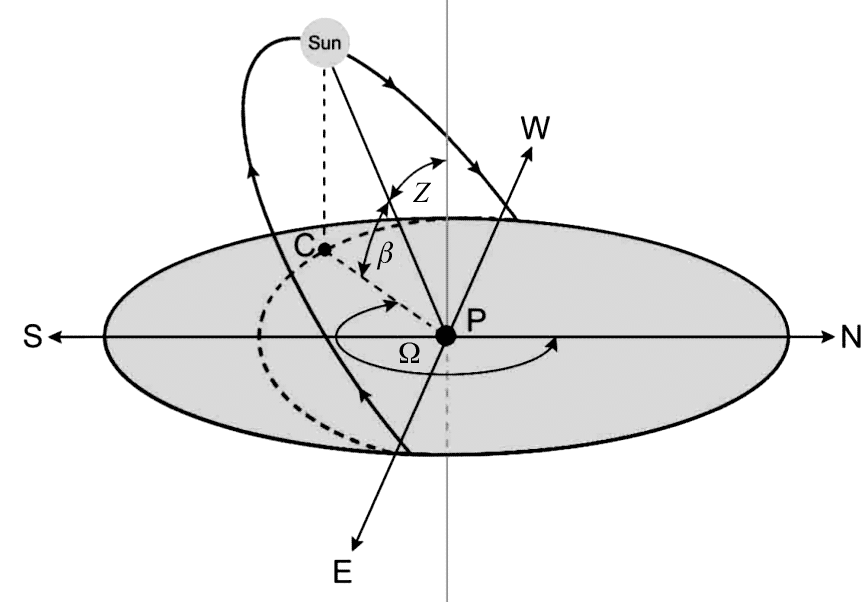
Calculating the Zenith
\[ \cos(Z) = \sin(\beta) = \sin(\Phi)\sin(\delta)+\cos(\Phi)\cos(\delta)\cos(h) \qquad(8)\]
where the hour angle (h) is a function of local apparent time (LAT):
\[ h = 15^{\circ}(12-LAT) \qquad(9)\]
So many times…
- Coordinated Universal Time (UTC): standard time, referenced to mean solar time at the prime meridian.
- Standard Time (LST) - What is on your watch without daylight savings offset - same for all longitudes within a given time zone.
- Local Mean Solar Time (LMST) - Mean solar time is fixed and ensures that on average, highest solar altitude is observed at noon (not at each day of the year). Changes with longitude.
- Local Apparent Time (LAT) - A non-uniform time that varies through the year according to the equation of time. It ensures that highest solar altitude is always observed at noon.
Local Mean Solar Time
Add (subtract) 4 min to LST for each degree of longitude east (west) of the standard meridian of the time zone.
- On the central meridian of -120 \(^{\circ}\) PST = LMST
- Any other longitude within time zone has an offset of 4 min per 1º between LMST and PST

So Many Times
\[ LMST = (TZ) + (\lambda-TZ_{m})\frac{4}{60} \qquad(10)\]
where \(\lambda\) is longitude, \(TZ\) is time in LST (e.g., PST = UTC-8) in hours, and \(TZ_{m}\) is the central meridian for a given time zone (e.g., PST = -120 \(^{\circ}\)). You can then calculate the local apparent time LAT as:
\[ LAT = LMST-\Delta LAT \qquad(11)\]
and \(\Delta LAT\) is: \[ \begin{eqnarray} \Delta LAT = & 229.18[0.000075+0.001868\cos(\gamma)-0.032077\sin(\gamma) \\ & -0.014615\cos(2\gamma)-0.040849\sin(2\gamma)] \end{eqnarray} \qquad(12)\]
Planetary Orbits and Kepler’s Laws
Kepler’s first law: states that planets follow an elliptical orbit, with the Sun in one focus. This implies that the Earth-Sun distance is changing during a year.
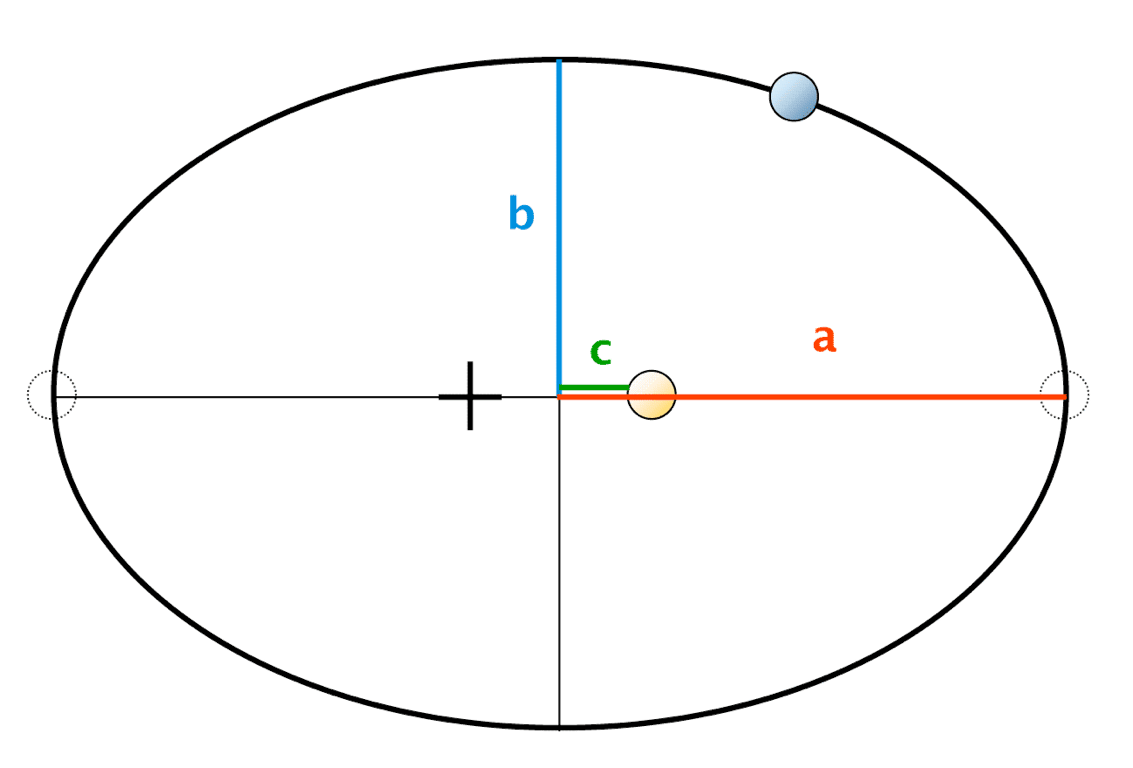
Kepler’s second law: a planet moves fastest when it is near the perihelion and slowest when it is near Aphelion.
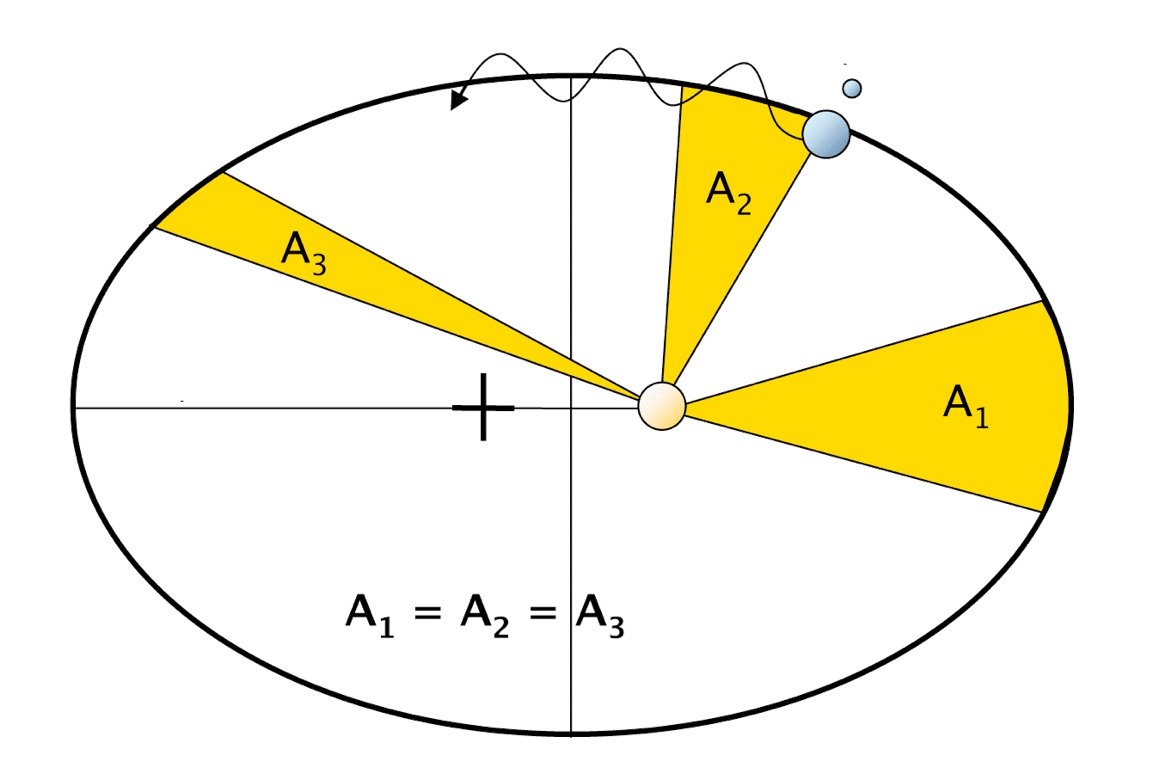
Local Apparent Time
Timezone not provided, estimating for -127.5, 50(0.0, 366.0)
Local Apparent Time
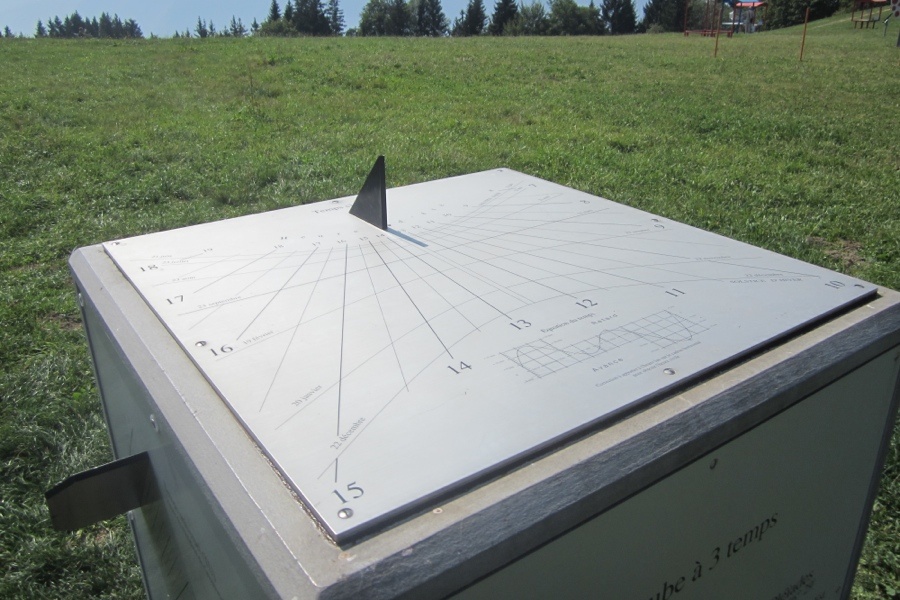
Photo: A. Christen
Sun path diagrams
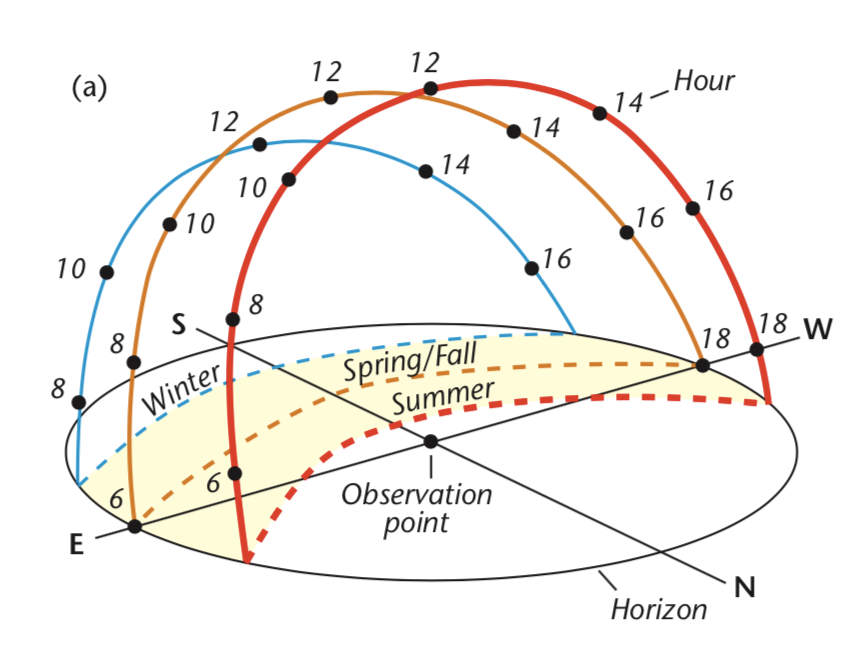
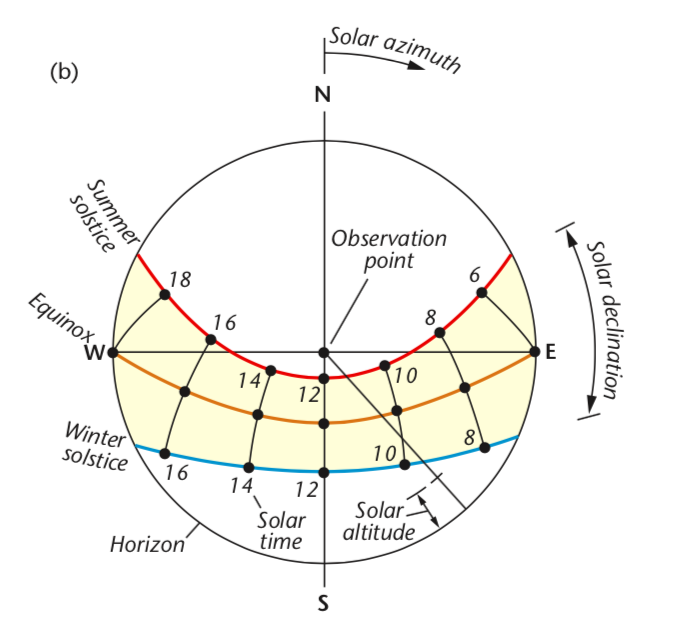
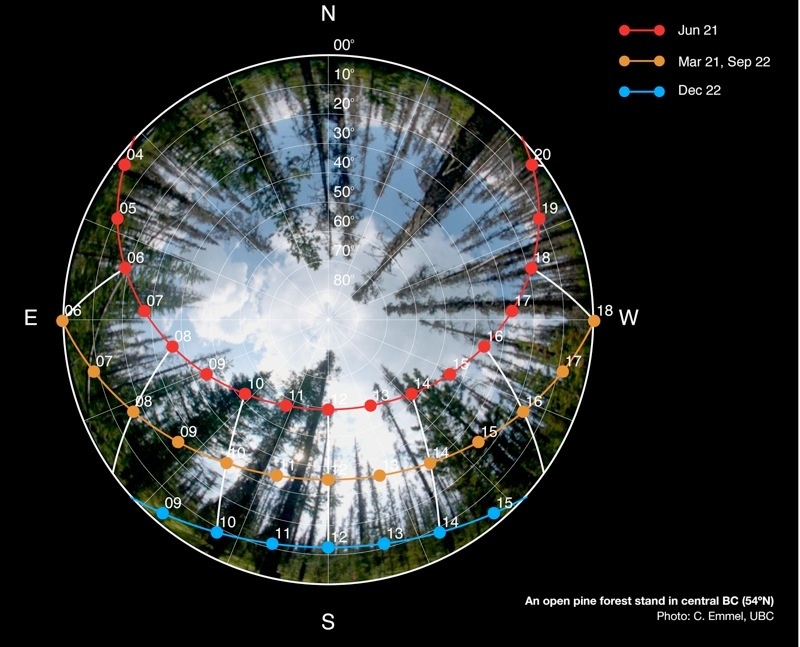



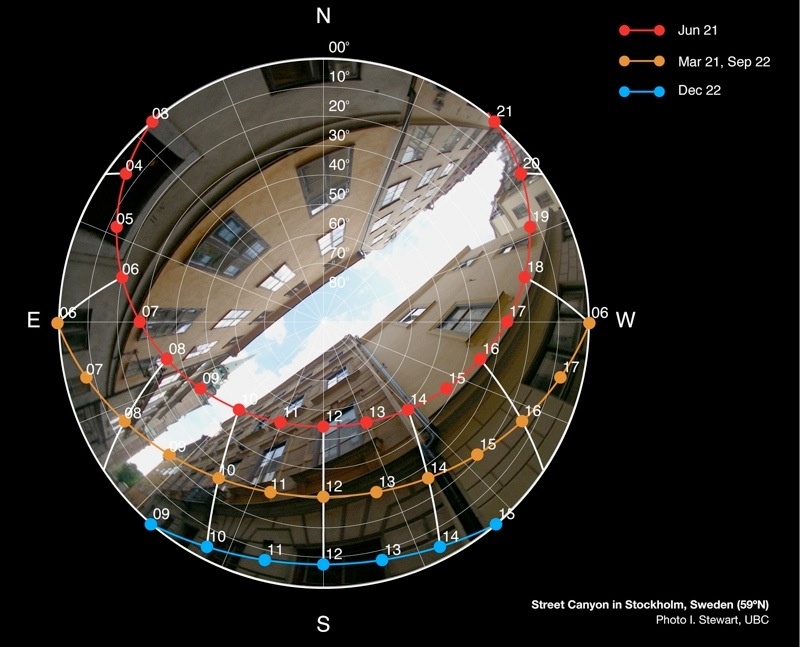
Cosine Law of illumination
\(R_p\) the radiative flux density on a surface perpendicular to the beam and Z is the zenith angle of incidence (i.e the angle between the surface and the direction of the beam).
\[ R_s = R_p cos(Z) \qquad(13)\]
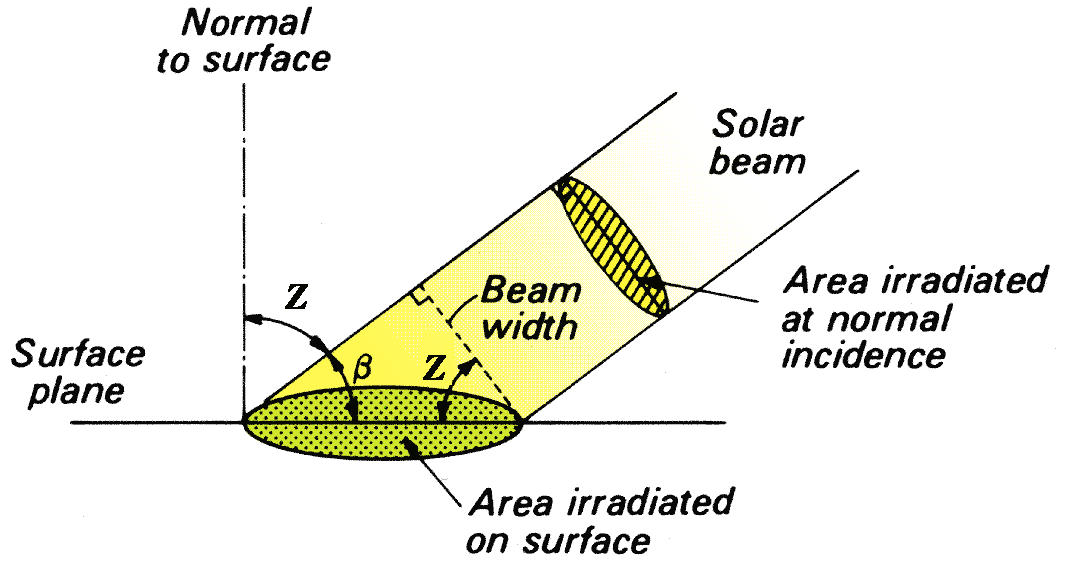
Solar constant \(I_0\)
The radiant flux density (irradiance) at the top of the atmosphere normal to the solar beam an at Earth’s mean distance from Sun.
- Present observations suggest \(I_0 \approx 1361 W m{-2}\)
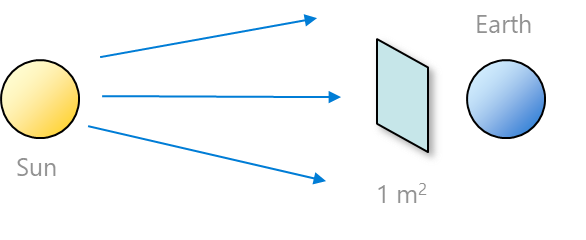

Earth’s Distance to Sun
\(R_av\) is the mean distance Earth-Sun over the year and \(R\) is the actual distance Earth-Sun at a given time.
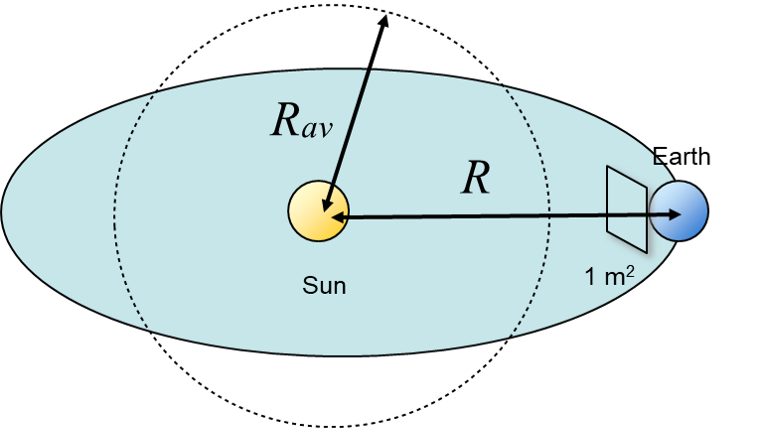
Extraterrestrial Irradiance
The solar input at top of the atmosphere at any time and location hence is given as \(I_ex\): \[ I_{ex}=I_0(\frac{R_{av}}{R})^2\cos(Z) \qquad(14)\]
where \(I_0 \approx 1361 W m^{-2}\), \(\cos(Z)\) applies the cosine law of illumination, and \((\frac{R_{av}}{R})\) adjusts the solar constant Earth’s elliptic orbit:
\[
\begin{eqnarray}
(\frac{R_{av}}{R})^2 = & 1.00011+0.034221\cos(\gamma)+0.001280\sin(\gamma)+\\
&0.000819\cos(2\gamma)+0.000077\sin(2\gamma)
\end{eqnarray}
\qquad(15)\]
Take home points
- We discussed a lengthy recipe to predict the relative position of the sun with reasonable accuracy, taking geometry and astronomical parameters into account.
- We combined cosine law of illumination (GEOB 200, ATSC 201) with the solar constant to calculate extraterrestrial irradiance at any given time and for any location.
- In the next lecture we will add the effects of the atmosphere with the goal to predict surface irradiance.